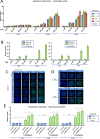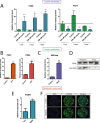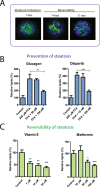Human hepatic 3D spheroids as a model for steatosis and insulin resistance
- PMID: 30250238
- PMCID: PMC6155201
- DOI: 10.1038/s41598-018-32722-6
Human hepatic 3D spheroids as a model for steatosis and insulin resistance
Abstract
Non-alcoholic fatty liver disease (NAFLD) has emerged as a public health concern as reflected in its widespread distribution in the general population. Yet, treatment options are scarce which is at least in part due to lack of reliable human in vitro disease models. Here, we report a human hepatic 3D spheroid system cultured under defined chemical conditions that has the potential to mimic steatotic conditions in a reversible manner, useful for identification of novel drug treatment conditions. Primary human hepatocytes (PHH) from different donors were cultured as spheroid microtissues in physiological in vivo -like culture conditions. Hepatic steatosis was induced over the course of three weeks in culture by supplementing the culture medium with pathophysiological concentrations of free fatty acids, carbohydrates and insulin. Effects of steatosis in the 3D system were evaluated on transcriptional, metabolomic and lipidomic levels. Free fatty acids on one hand as well as a combination of insulin and monosaccharides, promoted lipid accumulation in hepatocytes and increased expression of lipogenic genes, such as fatty acid synthase. This milieu also promoted development of insulin resistance within 2 weeks as manifested by an increase in gluconeogenic and insulin resistance markers, which are observed in type 2 diabetes mellitus and metabolic syndrome. Induced steatosis was reversible after withdrawal of lipogenic substrates and a further reduction in cellular fat content was observed following treatment with different antisteatotic compounds, such as metformin, glucagon, olaparib and antioxidants. Taken together, these results demonstrate that the 3D hepatic spheroids can serve as a valuable, HTS compatible model for the study of liver steatosis and facilitate translational discovery of novel drug targets.
Conflict of interest statement
M.I.S. and V.M.L. are Co-founders of HepaPredict AB.
Figures




References
-
- Almeda-Valdes P, Cuevas-Ramos D, Aguilar-Salinas CA. Metabolic syndrome and non-alcoholic fatty liver disease. Annals of hepatology. 2009;8(Suppl 1):S18–24. - PubMed
Publication types
MeSH terms
Substances
LinkOut - more resources
Full Text Sources
Other Literature Sources
Molecular Biology Databases

